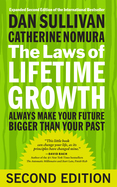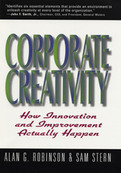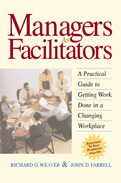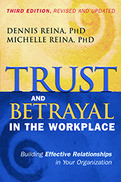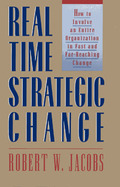Written by Dan Sullivan, the acclaimed speaker, author, consultant, and coach to entrepreneurs, this book provides refreshingly simple laws that will instantly shift your perspective to help you fully realize your personal and professional potential.
Growth is a fundamental human need. It is at the root of everything that gives us a feeling of accomplishment, satisfaction, meaning, and progress. Yet many people find their growth stalled at some point. In The Laws of Lifetime Growth, Dan Sullivan and Catherine Nomura offer ten simple laws that everyone can use to keep a fresh, innovative perspective on their lives and the world around them.
These laws are the distillation of Sullivan's years of coaching successful people, paying attention to what motivates them and what unlocks their greatest abilities. Each chapter is devoted to exploring one of the ten laws in detail, including stories of people from all walks of life who exemplify the law in action, common pitfalls that people often run into trying to apply the law, and practical strategies for getting past those obstacles. This second edition includes new examples, a self-assessment to measure your progress, and access to an interactive online tool. Once you start to integrate these laws into your life, you'll never outgrow them, they'll never become obsolete, and they will continue to lead you to greater happiness and fulfillment.
1998
A company’s creativity is the source of new ideas that lead to everything from the tiniest improvements to the most far-reaching innovations. Most companies are only too aware that their creative performance falls far short of potential. The problem is that they don’t know what to do about it. In Corporate Creativity, Alan Robinson and Sam Stern propose a radically different way to manage for creativity that allows companies to realize their creative potential and significantly improve their competitive position and profitability.
Robinson and Stern have investigated hundreds of creative acts in organizations around the world to make some surprising discoveries about how innovation and improvement actually happen. Rich with detailed examples, Corporate Creativity reveals six essential elements that individuals and companies can use to turn their creativity from a hit-or-miss proposition into something consistent that they can count on.
Today's managers are confronted with increasing pressure to produce more with fewer resources. In this pressure-packed environment, managers are finding that the old "direct-and-control" model simply does not work. People need more freedom to make decisions, respond quickly to their customers, and work together more effectively. Successful managers have learned how to use the role of facilitator to help people exercise this freedom to produce the results needed by their organizations.
Managers As Facilitators presents a new, easy-to-understand model of facilitation that focuses on getting work done. It provides practical guidance for managers and leaders who need to be successful in this new role. Weaver and Farrell show managers how to use themselves in new ways, capitalize on group dynamics, and build effective work processes. They explain that to become a successful facilitator, one must recognize and use the four key elements of the facilitation model:
1. Task: Facilitators are clear about the work that groups must complete; task drives the actions of effective facilitators.
2. Self: Facilitators learn how to use themselves to help groups complete their tasks; facilitators do this by both using their own personal thoughts and feelings as a "barometer" for groups and modeling the types of behavior expected from others.
3. Group: Facilitators help groups understand the difference between normal interactions and those that are a problem; facilitators also help groups capitalize on conflict, rather than be disabled by it.
4. Process: Facilitators use three fundamental processes to help groups: planning, solving problems, and completing work; facilitators are skilled with a number of facilitation tools, using them to help groups run effective meetings, finish projects, etc.
Managers As Facilitators offers readers practical ways to manage change and organizational boundaries to achieve the results they want. The authors explain how individuals, groups, and organizations experience change and work with boundaries-and what facilitators do to help. The book's final chapter synthesizes all the material by presenting "Quick Fixes" to common problems.
- Offers a practical, effective program to help transform leaders and managers in all types of organizations into skilled facilitators
- Teaches managers the facilitation skills they need to help their organizations improve productivity
- Includes real-life examples from manufacturing, telecommunications, health care, education, retail and other service businesses, and government and other non-profit organizations
• Presents a powerful research-based and field-tested model for building trust within any organization
• Includes case studies, tips, tools, and quizzes to help readers easily understand and implement the model
• Completely revised and updated throughout with a new chapter
• Download The Reina Transactional Trust Model (free!)
World-renowned psychiatrist Viktor Frankl's Man's Search for Meaning is one of the most important books of modern times. Frankl's extraordinary personal story of finding meaning amid the horrors of the Nazi concentration camps has inspired millions. Frankl vividly showed that you always have the ultimate freedom to choose your attitude—you don't have to be a prisoner of your thoughts.
Dr. Alex Pattakos—who was urged by Frankl to write Prisoners of Our Thoughts—and Elaine Dundon, a personal and organizational innovation thought leader, show how Frankl's wisdom can help readers find meaning in every moment of their lives. Drawing on the entire body of Frankl's work, they identify seven “core principles” and demonstrate how they can be applied to everyday life and work.
This revised and expanded third edition features new stories, practical exercises, applications, and insights from the authors' new work in MEANINGology®. Three new chapters outline how we all can benefit by putting meaning at the core of our lives, work, and society. And a new chapter on Viktor Frankl's legacy illustrates how his work continues to influence so many around the world.


